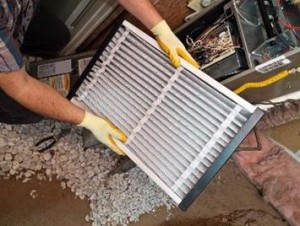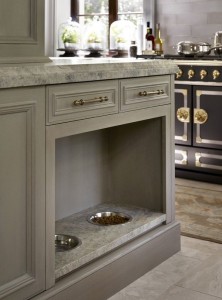Author: Kathleen Driscoll
Hello I’m Kathleen Driscoll Broker Owner of Driscoll Realty LLC in Downtown Hamilton, Mt. I have been in Real Estate and Mortgage banking for 30 plus years, I traveled as a military wife for over 20 years, which has given me a great insight into the buying and selling of homes. I'm a 4th generation Montana native, having been raised here in the Hamilton area. I served as a past Ravalli County Commissioner. I dealt with land use, Roads, Bridges, Wells, Septic’s along with Subdivision laws and requirements. Adding to my expertise.
If you want someone who can walk you through the process or buying or selling a home I have a great background & knowledge. Plus I just love people and places to explore. Let me know how I can help you feel more comfortable in finding that home or investment property you've been looking for. The process can be challenging, so let me help make easier for you.
Existing Home Sales Bounce Back!
IS YOUR FURNACE AFFECTING YOUR INDOOR AIR QUALITY?
IS YOUR FURNACE AFFECTING YOUR INDOOR AIR QUALITY?
Written by Fran J. Donegan on Thursday, 21 January 2016
The push to make our houses as energy-efficient as possible has, in some cases, led to unintended consequences. Because modern houses are less drafty due to tighter-fitting windows, doors and weather stripping, pollutants that were vented in the past are trapped inside. Most of the pollutants are relatively harmless, but some can be dangerous, and they all contribute to what some people call “sick house syndrome.”
“Pollutants” is a broad term, and can include things like dust mites, pet dander, mold spores and viruses, as well as gaseous pollutants like tobacco smoke and the off-gassing from paints, cleaning products and some building products. They can lead to headaches, dizziness, irritation of eyes, nose and throat, fatigue and more serious illnesses. If you experience these symptoms while in your house, but not when you are away from home, indoor pollutants may be the cause.
The best solution is to remove the cause of the pollutants and ventilate the space with fresh outdoor air. Unfortunately, natural ventilation is not always practical. No one is going to throw open the windows on a cold winter’s day, nor are they likely to open the windows if the house is cooled by a central air conditioning system—as the purpose of a tightly sealed home is to conserve energy.
However, you can also help remove some of the pollutants by upgrading the filter used in your forced-air heating and cooling system. The basic furnace filter is designed to keep dust and large particles out of the machinery, but more advanced filters can effectively remove pollutants, including viruses and odors, using a variety of methods. Standard filters simply trap particles on a flat filtering medium, while others have deep pleats with added surface area. Electrostatic filters provide an electrical charge that helps trap some particles more effectively.

Pick A Filter
There are a number of rating systems to help sort out the types of filters available. The systems will help you compare filters from different companies. The American Society of Heating, Refrigerating and Air-Conditioning Engineers (ASHRAE) developed the minimum efficiency reporting value (MERV) for filters. MERV rates filters on a scale from 1 to 20, with 20 being the most efficient at removing pollutants. According to the Environmental Protection Agency, filters in the 7 to 13 range are likely to be nearly as efficient as high-efficiency particle arrestance (HEPA) filters at removing airborne particles. Filters with higher ratings are used in hospitals, laboratories and clean rooms.
Be sure to buy the size filter that fits your system. The information should be in the owner’s manual or on the furnace itself. If you don’t have it, take the existing filter to the store with you. If you choose a high-efficiency filter, read the packaging carefully, as some need to be changed more frequently than others to function properly.
Inline purifiers are another option. These are installed inside the air ducts to remove pollutants. Some employ ultraviolet radiation to kill bacteria, allergens and mold. Others use a catalyst to oxidize pollutants (including gaseous ones), a process that converts the pollutants into harmless hydrogen and oxygen. Inline purifiers are usually used in addition to – not instead of – furnace filters.
Other Steps to Take
Installing a high-efficiency furnace filter is a good first step for tackling indoor air pollution. It’s something that you can do right away, for little money—a premium filter will cost less than $25. However, it won’t solve every type of pollution problem. Here are some other steps to take:
- Make sure range hoods, bathroom ventilation fans and dryer vents are all working properly. They vent moisture and odors to the outside. Getting rid of moisture vapor in bathrooms and kitchen will help prevent mold.
- Install carbon monoxide (CO) detectors in your home. CO is a byproduct of combustion, and if it accumulates in your home, it can be lethal.
- Have your house tested for radon. Radon is an odorless, invisible gas that is a byproduct of uranium that occurs naturally in the soil. If it leaches into your home, it can lead to serious illnesses. Test kits let you take a sample of air from your home and send it to a lab for results. If you do have elevated levels in your home, don’t panic. Radon mitigation products are straightforward and simple to install.
Protect yourself from the pollutants in your air by replacing your furnace filter as needed, and making sure to ventilate your home with fresh air whenever possible.
About The Author
Home-improvement expert Fran Donegan writes on heating systems, including furnaces, and home air quality issues, for Home Depot. Fran is the author of the home DIY books Pools and Spas and Paint Your Home. You can researchHome Depot’s forced air furnace selection online.
9 LITTLE THINGS THAT CAN MAKE OR BREAK YOUR HOME PURCHASE
Written by Jaymi Naciri January 24th 2016
When it comes to buying a home, we always think about the big things: sales price, location, mortgage qualification. But it’s often the little things that rise up to make living in that home a great joy or a huge letdown.
Your welcome to the neighborhood
There are neighbors who bring warm cookies to welcome you to the neighborhood and then there are the Homeowners’ Associations that welcome you with a stern warning to move your storage unit immediately even though it’s only been in your driveway for a few hours and you haven’t even arrived from your cross-country drive (true story).
The friendliness of your neighbors
Beyond your initial impression, is living in your neighborhood going to give you the kind of lifestyle you want? In many cases, you won’t know until after you’ve moved in. Spending some time there and getting to know your potential neighbors/asking questions before you purchase may give you the info you need.
Where to put the dog bowl
Does it seem like a frivolous thing to be considering when buying a home? Only until you move in and realize there’s nowhere to put the food and water bowls that won’t end up spilled, kicked over, or constantly in the way.
Think about it in terms of a car purchase. You might not notice the number/placement of drink holders in the new car you’re buying, but you’re sure going to notice how lacking they are when you’re driving a carful of people around in the 100-degree summer and there’s nowhere to put your Big Gulps. When your pets are a part of your life, considering where they will graze (and sleep and run) may help you make the best decision.
Closet space
Closet space isn’t necessarily a small thing (for many of us, it’s an absolute necessity!). But, it can also be one of those things that is easily overlooked when seduced by a big kitchen or a pool in the yard. If the closet space seems like it may be a problem when you tour the house, it most likely will be a problem when you’re living in the house.
Placement of the laundry
Is it a deal breaker if your laundry room is downstairs and the bedrooms are upstairs? Probably not, but it does make things more challenging. If you’re trying to decide between a couple of homes, this may be one of the little things that helps you finalize your decision.
Commute time to and from work
Your daily commute is something you’ve probably spent considerable time thinking about, especially if you’re considering moving farther from work. But even if you’re moving equidistance from your existing home, the commute could be very different. And it’s not something you want to discover AFTER you’ve moved. Doing a few test runs before you make an offer can help.
The schools aren’t great
If you don’t yet have kids, or they’re babies, or already grown, or you don’t plan on kids, the quality of the schools may not seem like a big deal in relation to other items on your must-have list. But, you never know how long you might live there. A “starter” home that’s supposed to be a springboard to a large home in a few years may not end up springing you so quickly. And studies show that good schools can help home values, so even if you’re not packing lunches and preparing backpacks, being near people who are might be a good move.
Positioning of the house
Everyone wants a house that’s light and bright, but what you might not want is a sun that sets right in your living room. If you’re in a warm climate, you can plan on being hotter than you’d like to be in that room during the summer and having higher electric bills.
Really high ceilings
This is another feature people tend to want in their home… until they actually have them and realize:
- It’s cold in the winter since all the warm air gets sucked up.
- It’s hot in the summer since conditioned air has a hard time doing its thing in such a vast space.
- You’ll never be able to paint the room without renting scaffolding
- Ditto for changing light bulbs
Buy Now Or Later? That is the question!

Septic Systems Through Power Point 101

Well’s and What to Know!
What Can Be Done To Correct Errors On A Credit Report?
BY GEORGE SOUTO
Mortgage and Lending with George Souto
Often I pull credit reports which the Borrower claims a debt is being reported incorrectly. Fortunately we have a process to assist them for free through our Credit Report Company, but for those who do not have that option, they need to know the steps to correct the errors on their own.
Finding a debt being reported in error is not the kind of SURPRISE anyone wants to see when they are reviewing their Credit Report. So What Can Be Done To Correct Errors On A Credit Report?

As I mentioned above, when I review a Credit Report with a Borrowers, and one of their Creditors has incorrectly reported a:
Late Payment
Collection
Judgment
I first instruct the Borrower to contact the Credit Reporting Company I use, and they assist the Borrower in making the necessary disputes to correct how the item(s) is being reported on their Credit Report for free. Most Creditors report monthly to all three Credit Bureaus Equifax, Experian, or TransUnion. Therefore, the dispute needs to be submitted to all three in order to correct the mistake and adjust the Credit Scores. I instruct the Borrower to send proof the item(s) were paid to the Credit Reporting Company I use, and a dispute is filed on behalf of the Borrower with all three Credit Bureaus.
However, those who are not applying for a Mortgage, and therefore, do not have access to this free service, they need to do the following to correct the items reported incorrectly on their Credit Report.
They will need to write a letter of dispute to each of the three Credit Bureaus Equifax, Experian, or TransUnion along with proof the items they are disputing are being reported incorrectly. The letter needs to include the Trade Line, Account Number(s), and reason why they believe it is reporting incorrectly.
Under the Fair Credit Reporting Act, each Credit Bureaus must contact the Creditor or person the dispute is being filled against within 5 days of the receipt of the request. The Creditor or person the dispute is filled against then has to give a written reply back to the Credit Bureaus within 30 days of the date the dispute was filled.
The Credit Bureaus then have 5 days from receipt of the creditor’s or person’s written reply, to provide a written report with their findings. They will also need to provide a copy of a revised Credit Report if changes were made.
So what happens if the procedure above is not followed? There are 3 possible scenarios:
No response from the Creditor or person the dispute is filled against. If that happens the data is removed.
The Creditor or person that the dispute is filled against shows proof they are correct. If that is the case the data remains.
The Creditor or person the dispute was filled against acknowledges they were wrong or partially wrong, and they correct the item(s) they are reporting incorrectly.
In each of the above scenarios the person who submits the dispute must be notified by the Credit Bureaus of the results, but there is one little twist to the first scenario. If the Creditor or person who the dispute was filled against does not respond within the required time period, and the correction is made, the error can still show up later if the creditor at a later date decides to report the item again. So if the correction is made because the Creditor or person the dispute was filled against did not respond, the person who submitted the dispute must continue to monitor their Credit Report, because the error could show up again at a later date.
Everyone is entitled to one free Credit Report per year from each of the Credit Bureaus. It is wise to take advantage of this every year, so if a Creditor is reporting something incorrectly, or if fraud is going on, it can be addressed quickly.
Hopefully those reading this blog will never have anything reported incorrectly on their credit report. But if there are errors just follow the steps above for What Can Be Done To Correct Errors On A Credit Report, and the errors should be corrected within 30 days.



